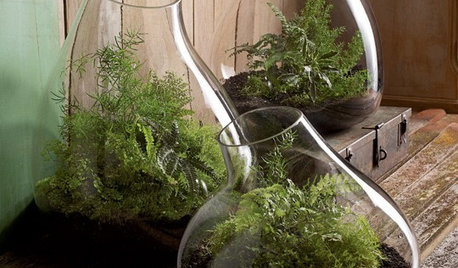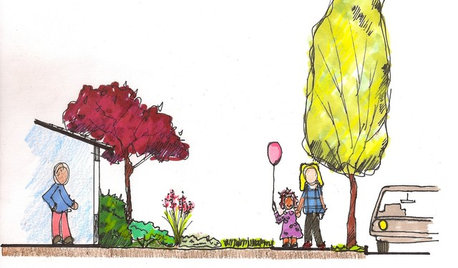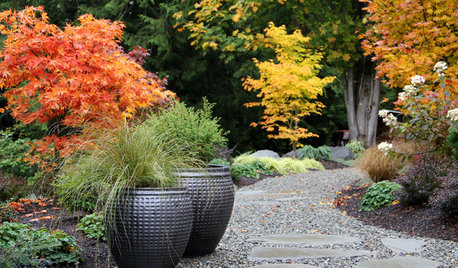A "new" twist on organic gardening
AmyinOwasso/zone 6b
9 years ago
Related Stories

PRODUCT PICKSGuest Picks: Organic Elements With a Modern Twist
Give your home the laid-back style of the Pacific Northwest with earthy, clean-lined pieces in neutral colors
Full Story
LANDSCAPE DESIGNGive Curb Appeal a Self-Serving Twist
Suit yourself with a front-yard design that pleases those inside the house as much as viewers from the street
Full Story
HOUZZ TOURSHouzz Tour: An Australian Cottage with a Vintage Twist
A Melbourne Blogger Outfits Her New Home in Quirky Second-Hand Finds
Full Story
PLANTING IDEASGreat Garden Combo: Fall Foliage With a Contemporary Twist
This fiery autumnal display relies on simplicity and ample spacing to create a distinctive panorama
Full Story
DECORATING GUIDESTwist Up a Room's Look With Tie-Dye
Dip into the organic patterns of tie-dye for one-of-a-kind style that can be — yes, you're hearing it right — thoroughly modern
Full Story
MODERN ARCHITECTUREDesign Workshop: 10 Surprising Twists on Window Trim
These modern approaches to window trim include no trim at all. Can you wrap your head around them?
Full Story
Modern Toile: New Twists on the Classic Pattern
Toile comes out of the box and into fun, contemporary interiors
Full Story
BARN HOMESHouzz Tour: An Old Dairy Gets a Contemporary Twist
Soothing neutrals and a mix of old and new transform a dilapidated Suffolk dairy into an elegant home
Full Story
HOMES AROUND THE WORLDHouzz Tour: A Medieval Palace With an Art Deco Twist
Eltham Palace is hailed as an architectural masterpiece, but the 1930s modernization of this historic home was controversial
Full Story



mulberryknob
scottokla
Related Discussions
new organic garden needs seed help
Q
new organic garden needs seed help
Q
Do I need organic plant food in my new butterfly garden?
Q
Organic New Jersey Garden
Q
Auther
Okiedawn OK Zone 7
soonergrandmom
Okiedawn OK Zone 7
luvncannin
Okiedawn OK Zone 7
AmyinOwasso/zone 6bOriginal Author
chickencoupe
soonergrandmom
luvncannin